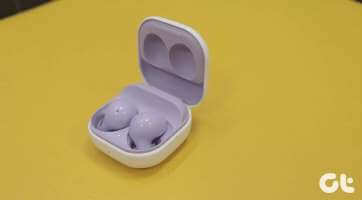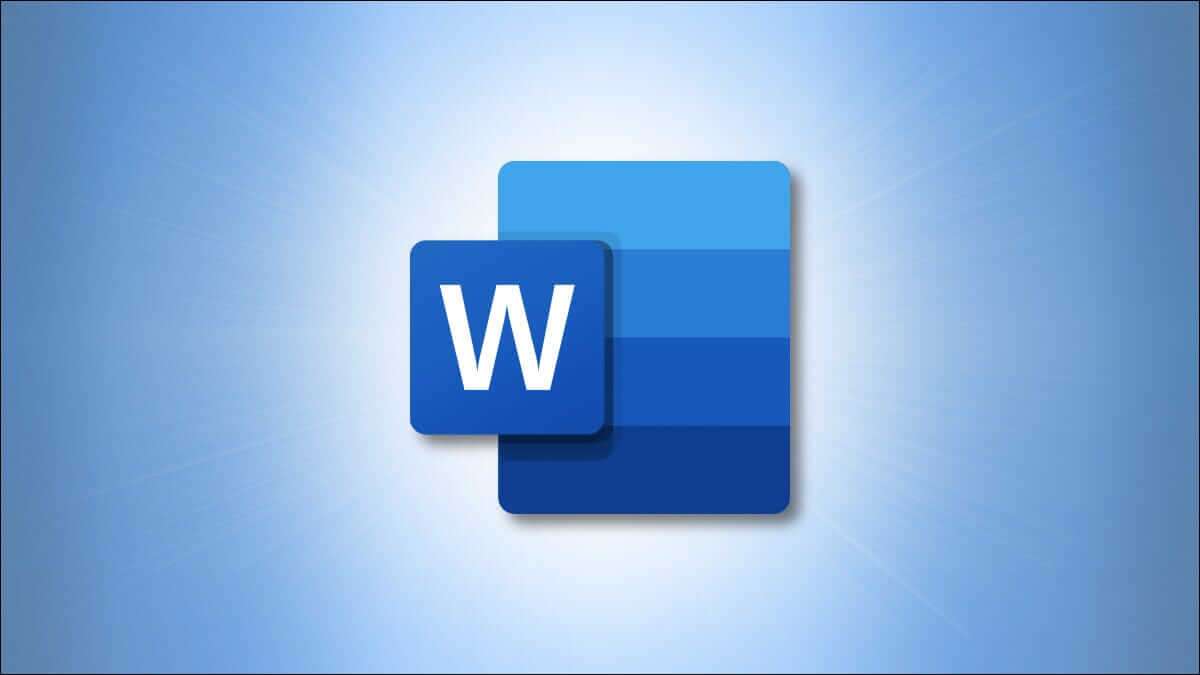Prepare Steam deck It's a powerful gaming laptop, but it can come with limited storage space, especially the base model, which has 64GB of internal storage. If you plan to install many games, consider adding more storage to your Steam Deck.
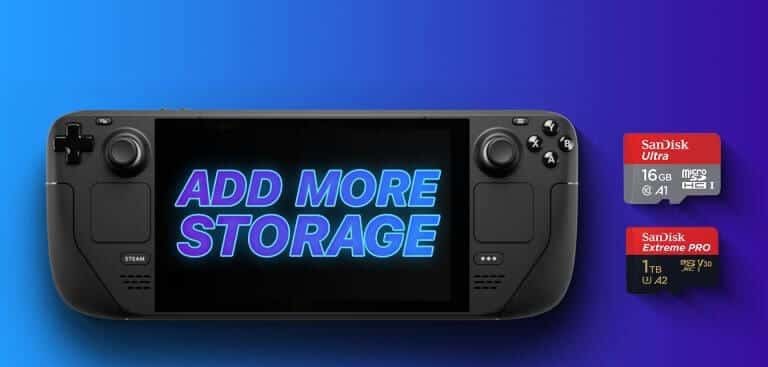
Fortunately, there are three ways to add more storage to your Steam Deck. In this guide, we'll highlight each of these methods and walk you through the steps necessary to expand your Steam Deck's storage space.
How to upgrade your Steam Deck storage
With more storage space, you can expand your library. Your games on Steam DeckWhat's more? You can use the extra space to store videos and watch movies on your Steam Deck as well. However, before adding more storage to your Steam Deck, it's important to understand how to do it.
One of the easiest ways to expand your Steam Deck's storage space is with a microSD card. These small cards can pack a punch in terms of storage capacity and are readily available and affordable.

Alternatively, you can choose to connect a USB drive or external SSD to the Steam Deck. However, you'll need to mount and format it differently to use it as your game library. Finally, you can upgrade the internal SSD, which is more complicated. Also, note that this will void your warranty. Let's delve into these methods.
Method 1: Use a MicroSD card with your Steam Deck
Let's discuss the simplest way to add storage space to your Steam Deck. Since the console has a microSD card slot, you'll need to purchase a microSD card for your Steam Deck. Then, set it up as the default location for your game library. Here's how.
Step 1: Insert card microSD In the microSD card slot located at the bottom of the device.
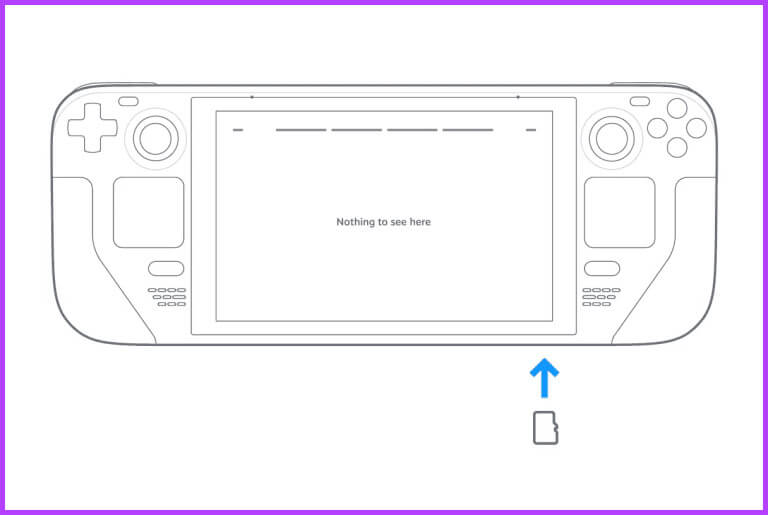
Step 2: Now, it's time to configure it for use with the Steam Deck. To do this, press the button Steam To open Steam List. Click on Settings to follow.
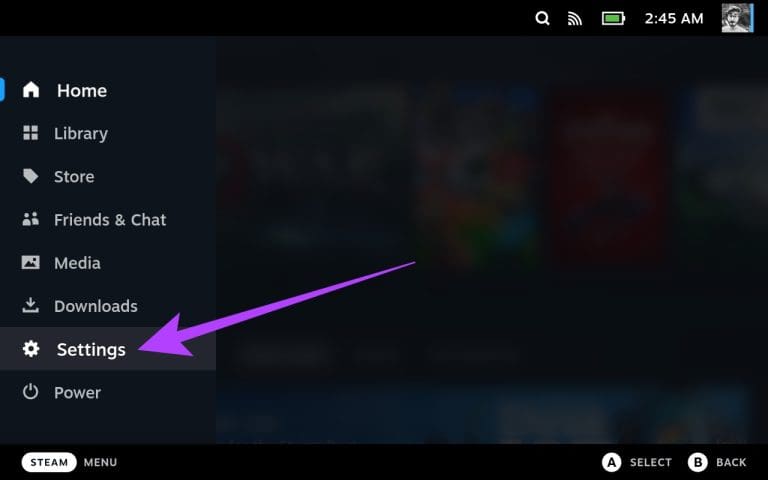
Step 3: Switch to system configuration from the left sidebar.
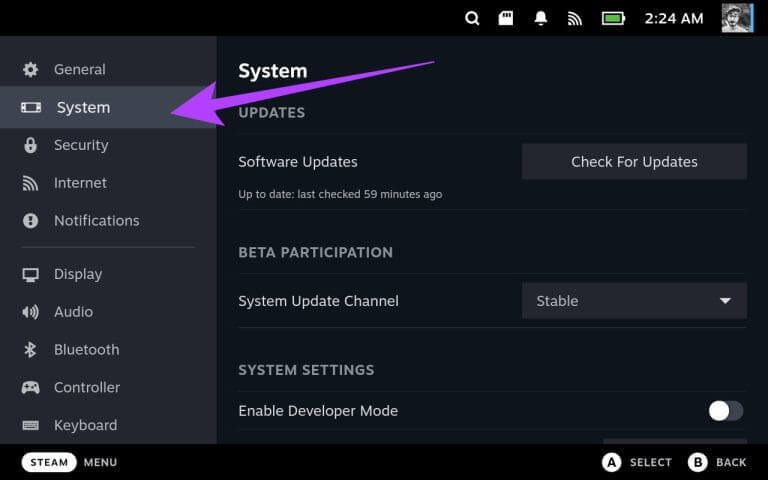
Step 4: Now, scroll down to the System Settings section. Here, tap the Format button next to "Format SD card".
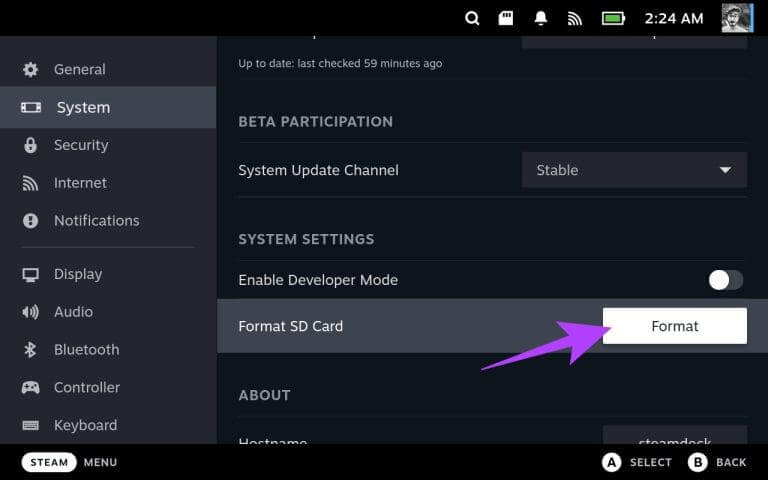
Step 5: Locate emphasis to follow.

Steam Deck will first test your SD card. It will then proceed to format it.
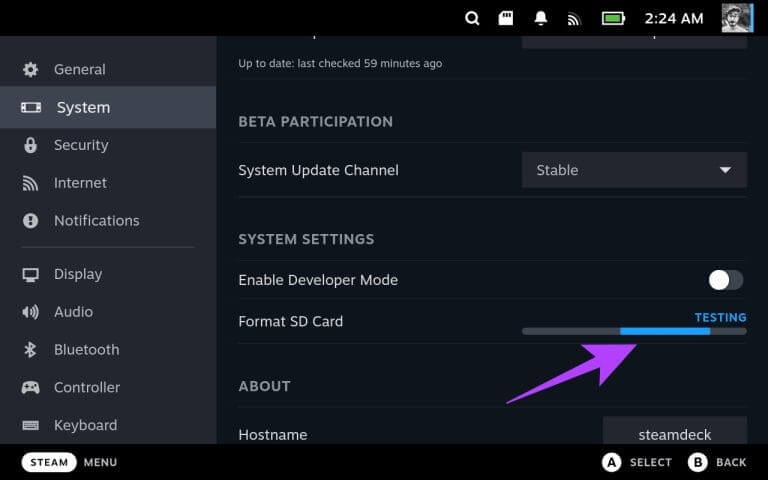
Once done, the formatting bar will be replaced with the button. "coordination". If something fails, you'll receive a notification. However, no notification will appear if everything goes well.

Step 6: Now that your microSD card is formatted, it's time to use it in your game library with the Steam Deck. To do this, go to Storage settings from the left sidebar.
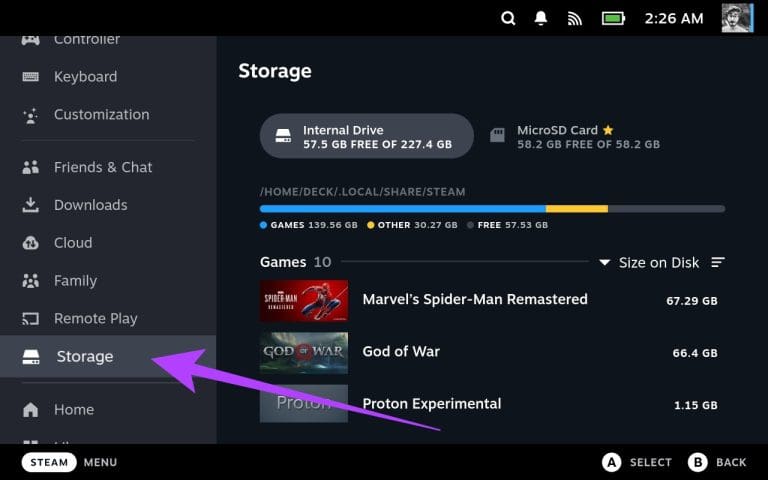
Step 7: in Storage settingsSelect a card MicroSD And press X On Steam Deck.
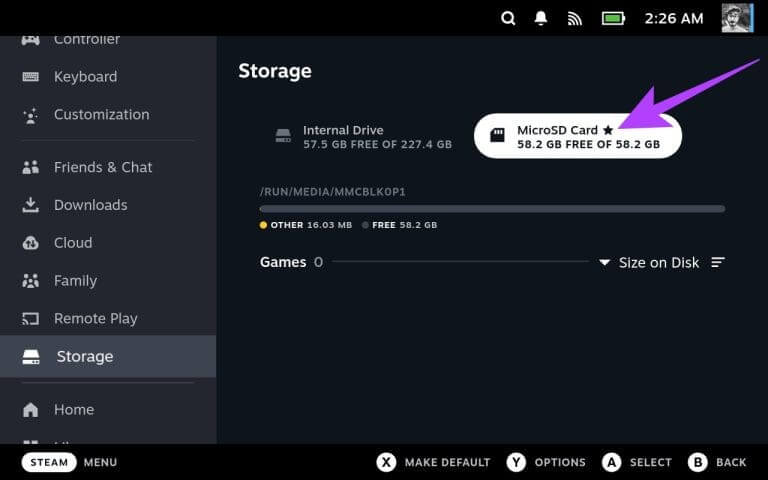
That's it. Your MicroSD card is now the default download location for new games.
Method 2: Use a USB drive or external storage device with your Steam Deck
You can also use a USB drive or external storage device to add more storage capacity to your Steam Deck. Steam Deck supports many USB storage devices, including hard drives, solid-state drives, and flash drives.
You can connect an external SSD directly to your Steam Deck or connect it using the Steam Deck base. However, making the drive usable with the Steam Deck is a pain. Here's how.
Note: Before proceeding, we recommend using an external keyboard with your Steam Deck, as the process involves a lot of typing. Alternatively, you can press the Steam + X keys together to open the virtual keyboard. However, this will be tedious.
Step 1: click on the button Steam located on the Steam Deck and select Power. Now, press Switch to desktop to follow.

Step 2: Inside desktop mode, we will use Terminal unit To format our external drive, first run the application Console From the app launcher.
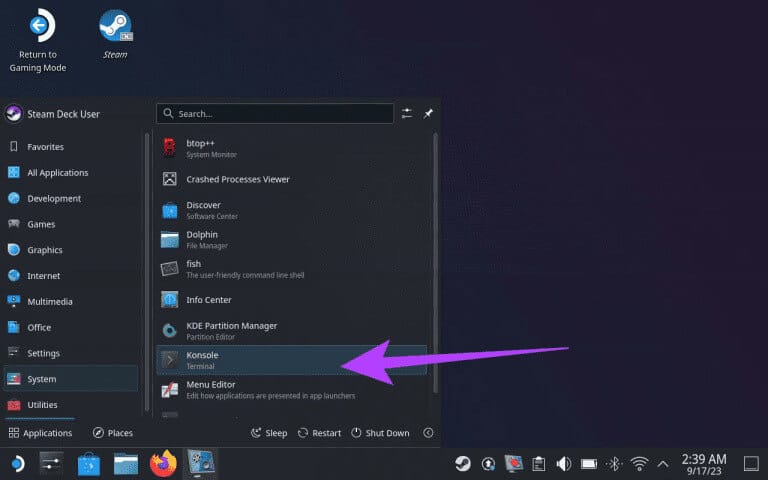
Step 3: Now, type Passwd Within the terminal window, you can set a custom password of your choice.
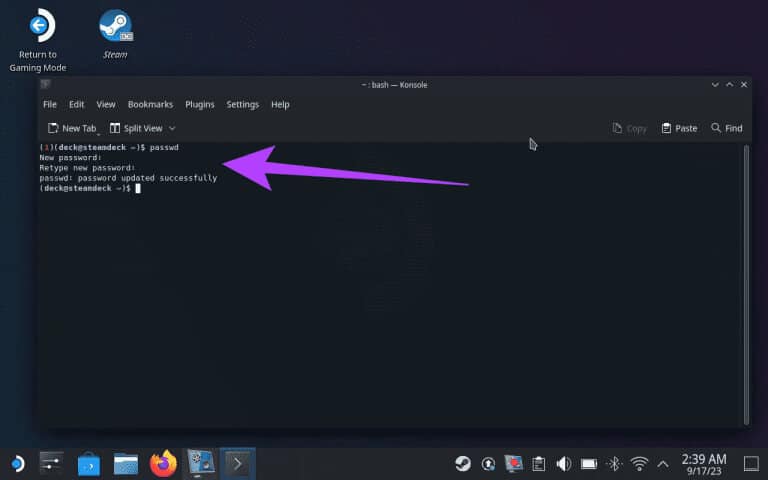
Step 4: Once you've added a password, connect your external drive to the Steam Deck. Then, go to App Launcher > System > KDE Partition Manager.
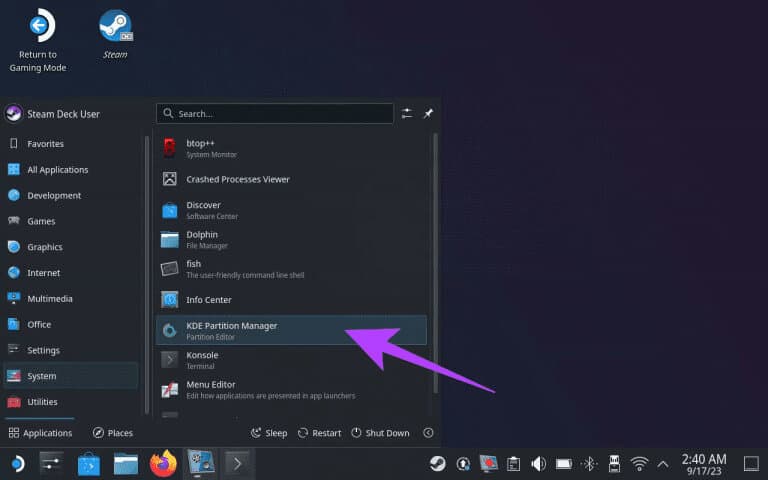
Step 5: You must enter your password in the partition manager. Once done, highlight the drive you selected, right-click on the partition, and select delete.
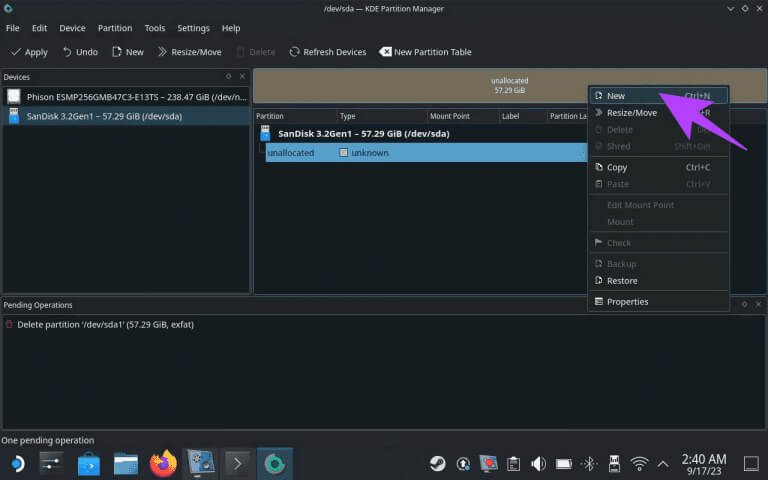
Step 6: Now, in the unallocated space, right-click again and select new. This will take you to the process. Create a new section.

Step 7: For the new partition, specify two settings. First, set the file system to ext4. Second, make sure to add a name or label to the drive. In this guide, we'll name it “ExtSSD”. then press OK.
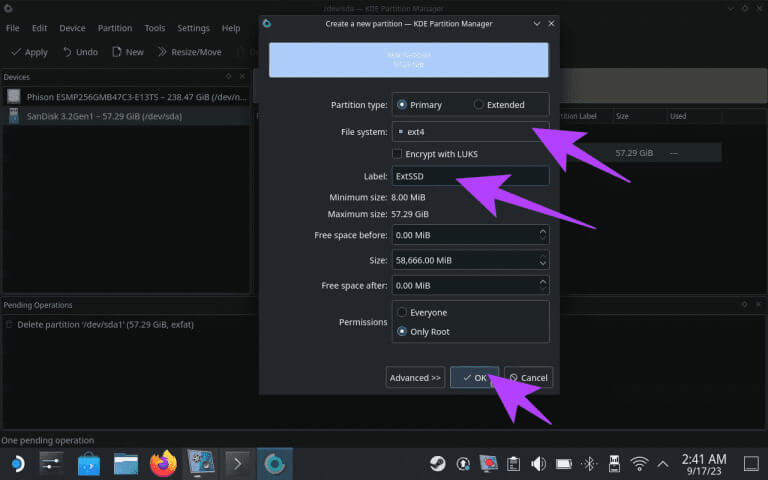
Step 8: You will notice that the tasks have been added to the task queue. "Pending operations". Click "Application" In the upper left corner to start formatting.
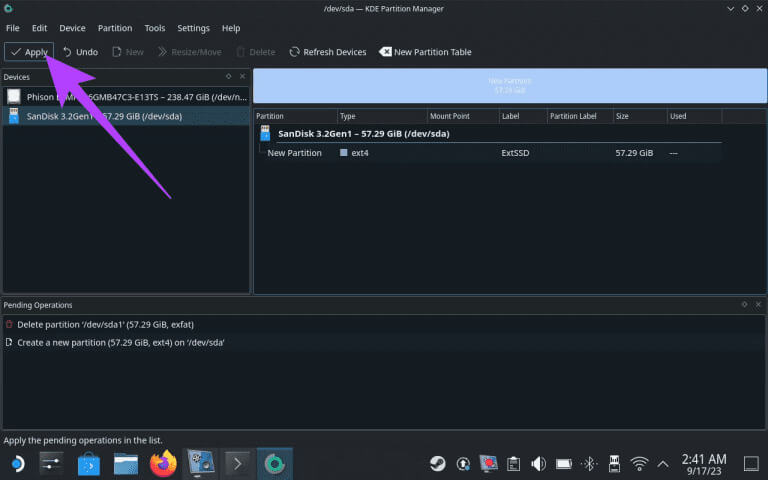
Step 9: The manager will ask you KDE section Confirm. Click “Pending Operations Application” to follow.
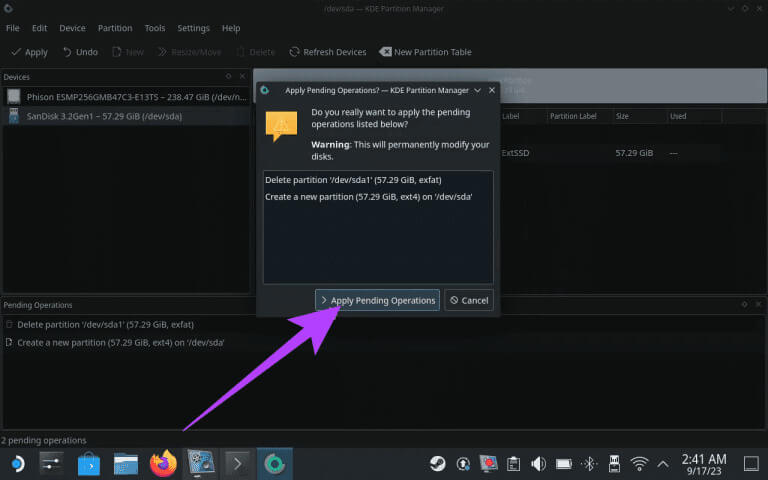
Step 10: Once formatted, mount the drive. To do this, click the icon USB In the taskbar.
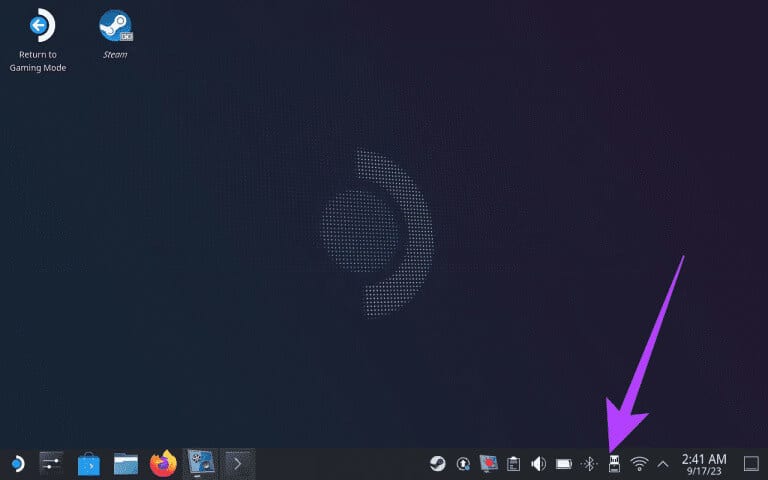
Step 11: In the pop-up window, highlight the external drive. Then select “Mount and Open” To mount the drive on Steam deck.
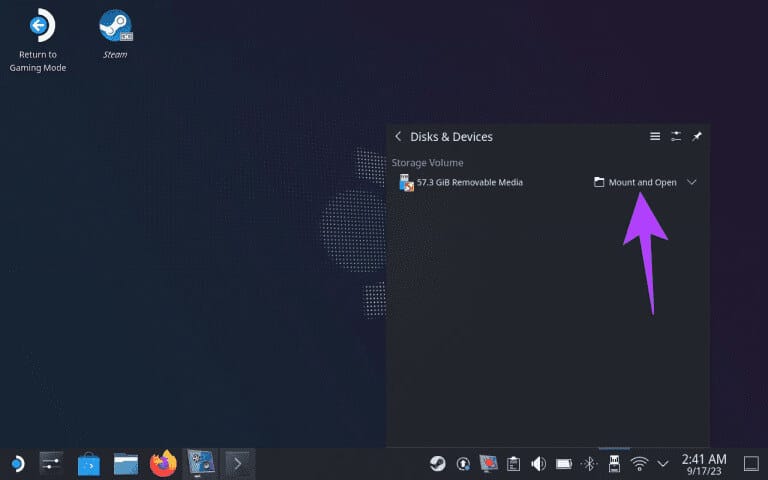
Step 12: Now, while the drive is mounted, change the permissions so that it can be accessed from Deck. To do this, open Terminal again, type the following command, and then press Enter.
Note: Replace "Drive Name" with the label you added earlier. So in our case, it would be "ExtSSD."
sudo chown deck /run/media/deck/[drive name]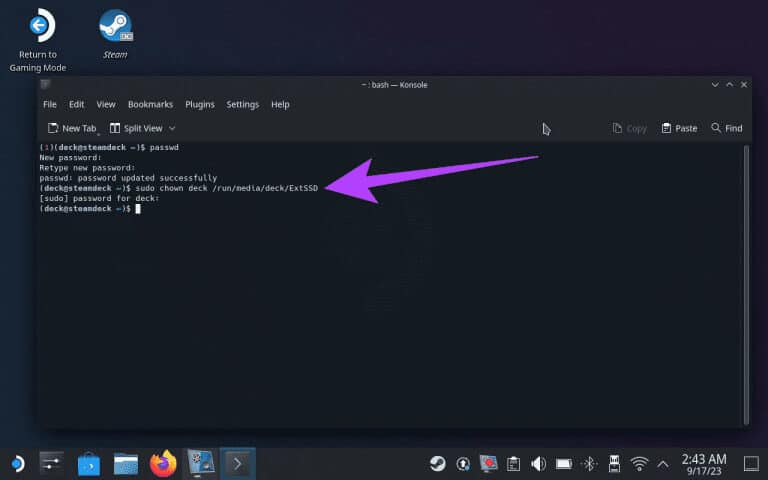
Step 13: The external drive must have the appropriate permissions. Now, to create a Steam library on your external drive, open Steam app.
Step 14: Inside, click on the icon. Steam at the top and select Settings.
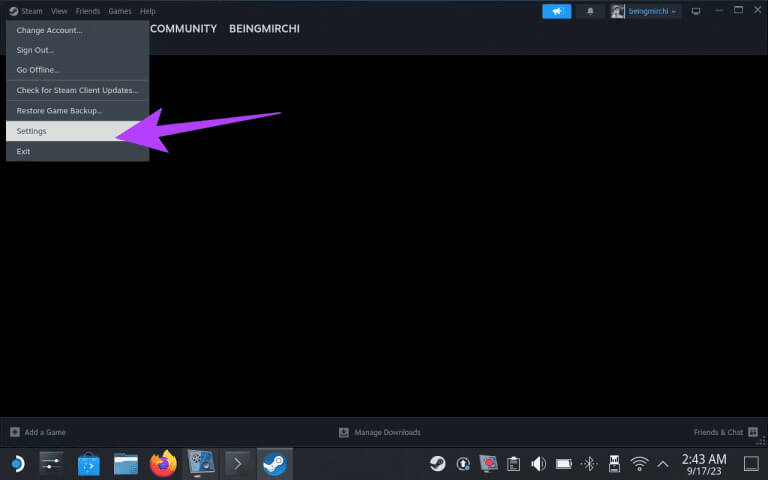
Step 15: Locate Storage From the left sidebar. This will take you to Storage settings.
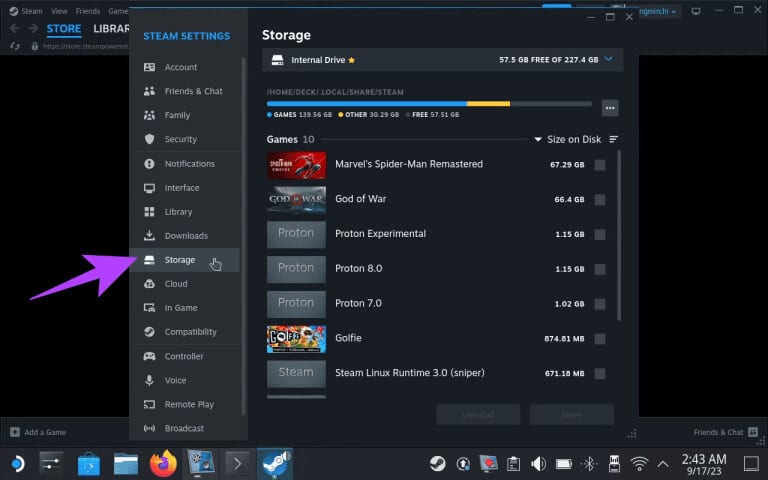
Step 16: Click or tap the internal drive. This will open the drop-down menu. Click Add engine.
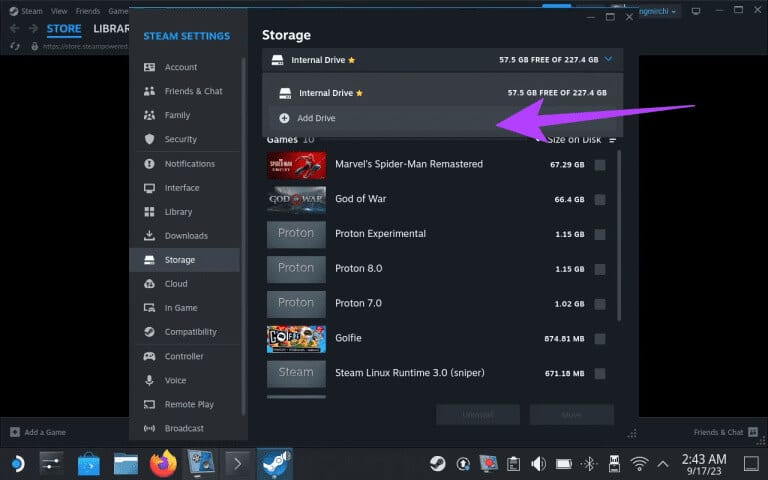
Step 17: You'll now get a pop-up window to add a new Steam library folder. Make sure your external drive is selected. Click "addition" to follow.
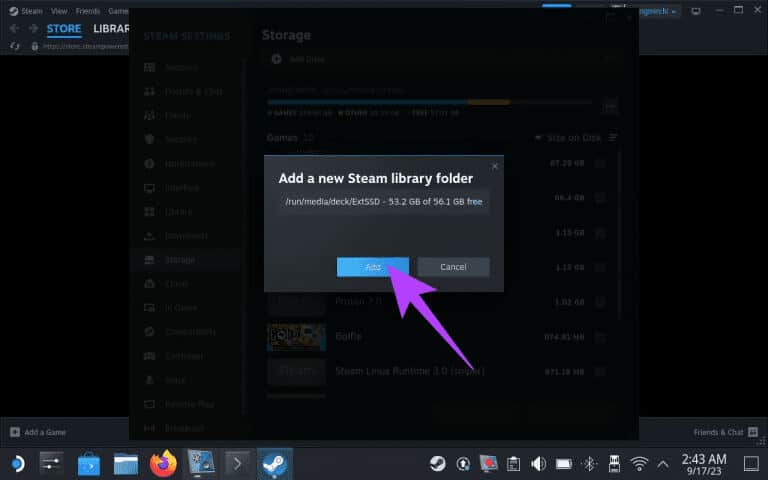
Step 18: Once finished, select the drop-down menu again. It should appear. External SSD Yours is now on the list.
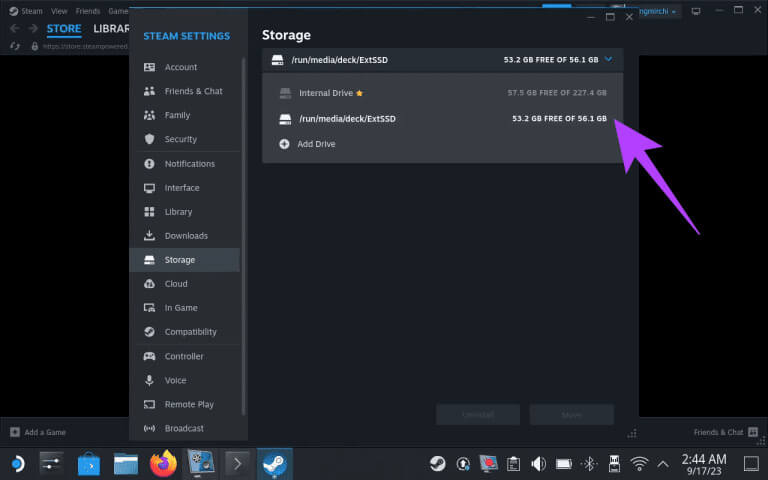
Step 19: Now, it's time to set it as the default game location. To do this, switch back to Game Mode On your Steam Deck. Then press the button. Steam and select Settings.
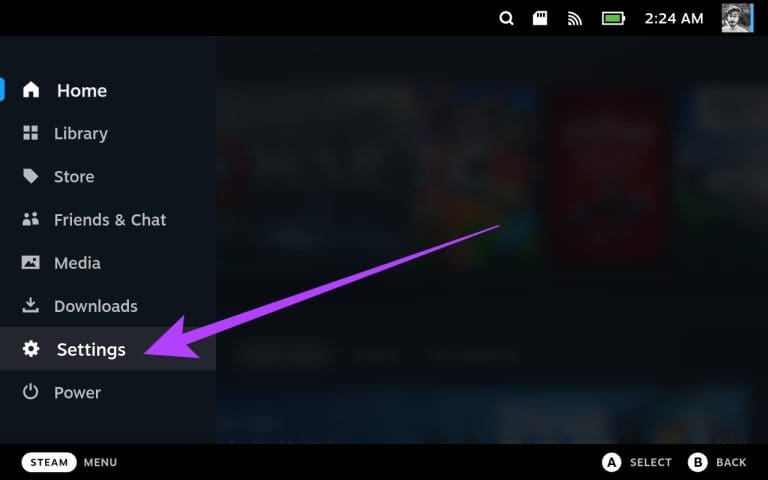
Step 20: Go to section Storage. You will notice both the internal drive and the external storage.
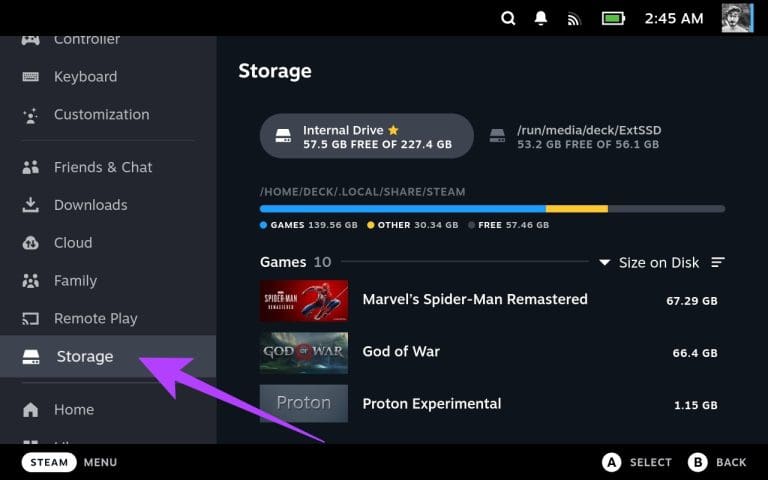
Step 21: Locate external storage unit your Steam Deck and press the X key to set it as the default game download location.
You will notice a star icon next to the drive indicating that your preferences have been applied.

That's it. You can now use your external drive to add more storage to your Steam Deck. However, keep in mind that if you decide to put your Steam Deck to sleep or restart it, the drive will be unmounted. In this case, you'll need to switch to desktop mode and mount it again. To do this, follow steps 9 through 11.
Method 3: Increase the internal storage space of the Steam Deck
Replacing your Steam Deck's internal SSD to increase its storage capacity is a more complex procedure and is not recommended for users who are uncomfortable opening their devices. Additionally, it's important to note that this procedure will void your Steam Deck's warranty.
To replace an SSD in your Steam Deck, you'll need a new M.2 2230 SSD with a capacity of up to 2 TB. After obtaining the new SSD, power down the Steam Deck and remove the back cover. Then, replace the internal SSD with your new SSD of choice. Once this step is complete, reattach the back cover and power on the device.
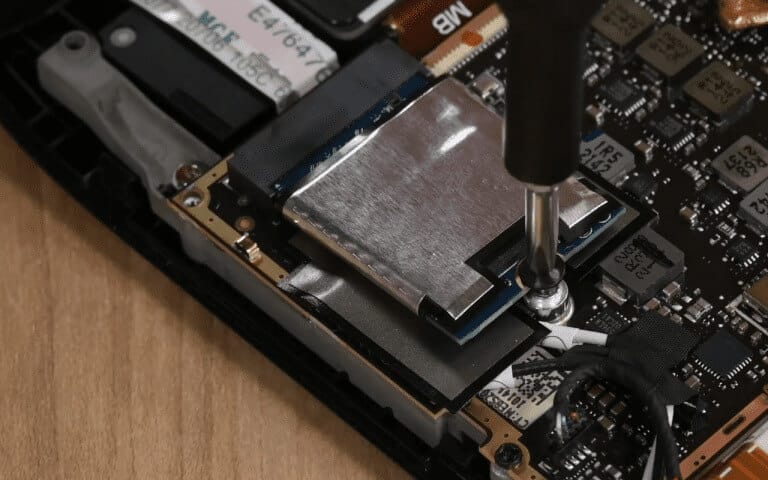
To reinstall SteamOS on your Steam Deck, you'll need to create a bootable USB drive. You can get SteamOS Recovery Image Follow Steam's instructions to install SteamOS on your Deck.
common questions:
Q1. What file system does Steam Deck use?
The answer: Steam Deck uses the ext4 file system for its internal storage. You can also use ext4 for external storage devices, such as microSD cards and USB drives. However, Steam Deck supports other file systems, such as NTFS and exFAT.
Q2. Does Steam Deck support NTFS?
The answer: Yes, Steam Deck supports NTFS. It can read and write to NTFS drives. However, using NTFS drives for games on Steam Deck is not recommended, as some games may not work properly. It's best to format your storage drives as ext4 for optimal performance and compatibility.
Q3. What is the maximum storage capacity supported by the Steam Deck?
The answer: The Steam Deck supports microSD cards up to 1 TB. It also supports external USB storage devices up to 2 TB.
Enjoy more storage
Adding more storage space to your Steam Deck is a great way to increase the number of games you can install and play. There are several ways to add more storage, so you can choose the one that best suits your needs and budget. If you're looking for the easiest and most affordable method, we recommend using a microSD card.
While you can connect an external drive to your Steam Deck, this involves the hassle of installing the drive every time you wake the Deck from sleep mode. On the other hand, while replacing the internal storage is a one-time process, it voids your warranty. However, both methods will provide more storage space than a microSD card.



